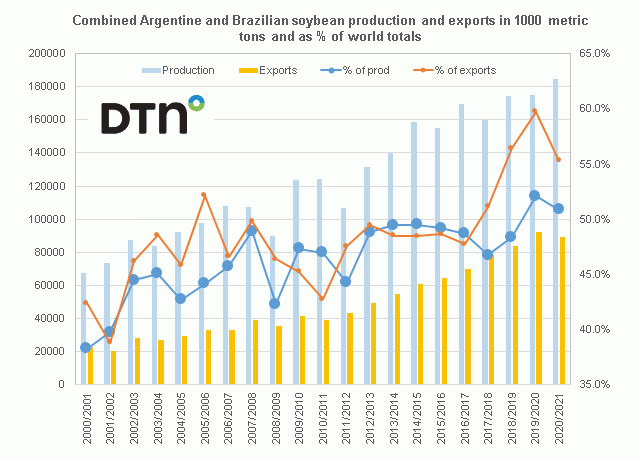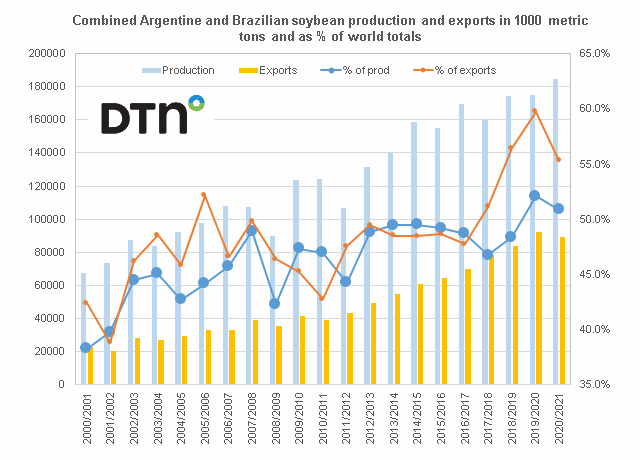Fundamentally Speaking
USDA Expects S. America Soybean Exports to Fall
A lot of head scratching about why, if the USDA cut this year’s U.S. soybean exports by 100 million bushels (mb), what set of circumstances would lead them to forecast a 375 mb increase in next year’s exports, especially after South America again harvested a record crop and forecast for even bigger supplies next year as projected in the May 2020 WASDE report.
Add to this the question of Chinese buying plans and for long-term skeptics about the veracity of the Phase 1 agreement, ongoing U.S.-Sino tensions over a number of COVID-19 related issues, the fact that purchases under the accord are supposed to be market based and the realization that the spreading coronavirus does give China a legitimate excuse to back out of adhering to the Phase 1 terms, makes it likely that by the end of 2020, a good part of the $40 bln required purchases will not have been allotted.
The anticipated rise in our overseas sales from the 1.675 billion bushels (bb) to 2.050 bb next year according to the USDA is based on the U.S. supplying a good part of China’s needs, seen increasing by 4 million metric tons (mmt) for the coming year to 96 mmt.
P[L1] D[0x0] M[300x250] OOP[F] ADUNIT[] T[]
Their latest oilseeds circular notes that by the first half of 2020/21, however, the rapid depletion of Brazilian old-crop stocks will expedite a switchover in China’s suppliers.
Will the U.S. really be the beneficiary of enhanced Chinese soybean demand?
Even the USDA notes that the sharp depreciation of South American exchange rates relative to the U.S. dollar have made the soybean shipments of these competitors comparatively cheap.
A look at trends in South American soybean production and exports suggests Brazil and Argentina may not cede ground so readily.
This graphic shows combined Argentine and Brazilian soybean production and exports in 1000 metric tons on the left hand axis and as percent of world totals on the right hand axis.
Total output this year from these two set a record for the second year in a row at 175 million tonnes accounting for 52% of global production, the first time ever both countries combined have produced over half the world soybean crop, and next year production is seen increasing another 9.5 million tonnes.
Yet even with this large output increase and the fact that combined exports of the two have risen for nine straight years growing from 43% to 60% of total trade, USDA has their exports actually lower for the 2020/21 season by 2.5 million metric tons.
That appears to be why the USDA is looking for a very sizable jump in our overseas projected soybean sales for the coming year.
© (c) Copyright 2020 DTN, LLC. All rights reserved.






Comments
To comment, please Log In or Join our Community .